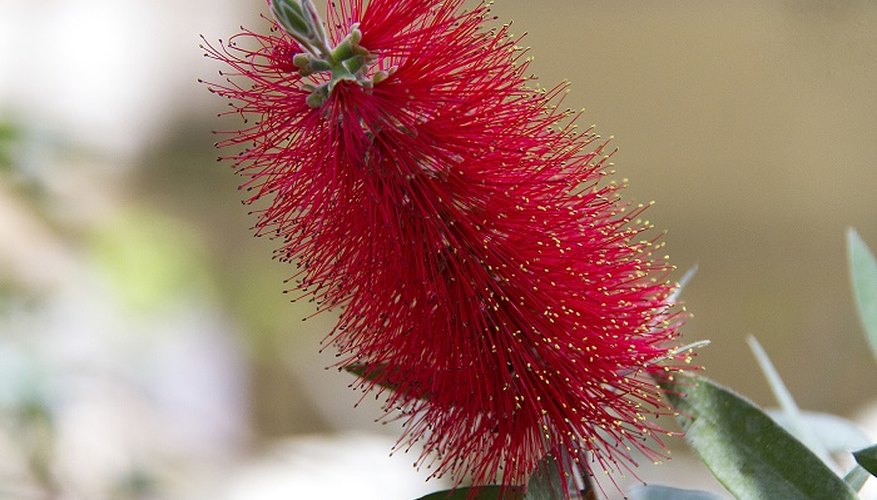Native to Australia, the bottlebrush shrub is an attractive, hardy addition to any sheltered, sunny garden or conservatory. They're known for their tough little leaves, textured bark and red, bottlebrush-like flowers. They can be maintained as a shrub, but more often than not, they're grown as a small tree with a graceful weeping habit. Prune your bottlebrush to keep it looking its best.
Starting at the lower part of the shrub, cut several of the branches close to the trunk. When you've opened up the lower, inside part of the tree a bit, take a few steps back and examine the tree's form. If it looks a little lopsided, prune a few more branches for balance.
Cutting on the leaf nodes, prune a few more of the branches from the lower part of the tree. Make the cuts at different places, for a more natural, layered look. If the tree begins to look a little umbrella-like, with a bare lower trunk and a full canopy, stop pruning the lower branches. Bottlebrush plants look their best when they have a natural, flowing form.
- Cutting on the leaf nodes, prune a few more of the branches from the lower part of the tree.
Cut off any lower branches that fork. This will help encourage the branches to reach up and out, and give the bottlebrush an attractive, weeping look. Part of the appeal of weeping trees is their movement in the breeze, and the bottlebrush is no exception.
Continue to prune carefully as you move up the shrub, taking time to examine the shape of your plant. Prune the ends off higher, arching branches throughout the growing season, especially after the bottlebrush blooms are spent -- this will encourage more blooms. Continue to open up the inside of the shrub by pruning the inside branches. If the inside gets too dense, the sunlight isn't able to reach the branches and they may attract mould and pests.
Ease off the pruning as the growing season ends and winter begins. If you prune too late in the year, the resulting new growth may be susceptible to damage in a severe cold snap.
TIP
For the first three years of the shrub's life, prune by cutting back one-third of the growth at the base of the shrub. The shrub will bounce back quickly and reward you with a rapidly growing, more sturdy plant.
Old and tired bottlebrush plants often benefit from an occasional hard pruning down to the ground.
You'll need to grow the bottlebrush under glass in most parts of the UK.
WARNING
Plant your bottlebrush plants a little high in the ground. Don't allow them to sit in water.
